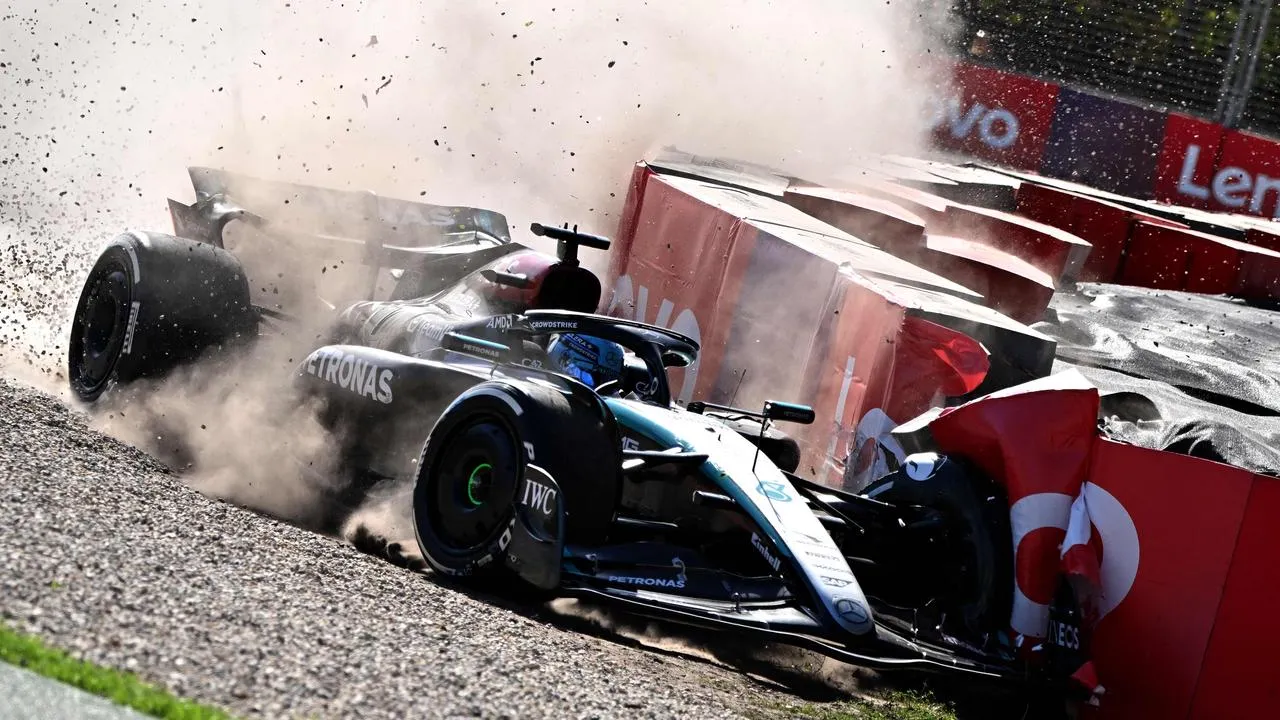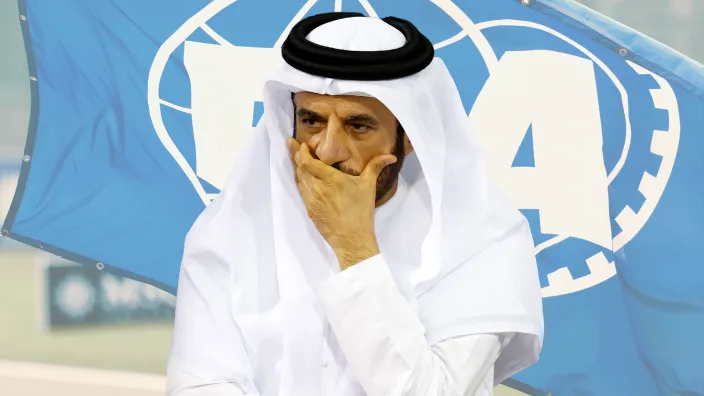George Russell’s Horror Crash Forces Major Australian GP Changes – Overdue Safety Fix or FIA Overreach?

The fallout from George Russell’s violent crash at the 2024 Australian Grand Prix has triggered sweeping safety changes at Albert Park ahead of the F1 2025 season. The incident, which saw Russell’s Mercedes thrown back onto the racing line in a terrifying sequence, has reignited fierce debates about driver safety, track design, and FIA stewarding decisions. But are these changes a necessary step toward improving circuit safety, or is the FIA overcompensating in response to one high-profile incident?
Russell’s Frightening Crash Raises Alarming Safety Concerns
During the closing laps of last season’s Australian Grand Prix, Russell suffered a heavy crash at Turn 6, one of the most treacherous corners on the circuit. His car was sent careening into the barriers before being violently thrown back onto the track, where it landed on its side. In a moment of panic, Russell’s voice came over the team radio, frantically urging race control to deploy a red flag. The risk was obvious—had another driver been unable to react in time, a catastrophic collision could have unfolded.
The FIA’s decision to review the track layout came amid increasing concerns over Albert Park’s revised design, particularly the modifications introduced in 2022 that increased speeds at Turn 6. While the adjustments were originally intended to promote overtaking, the unintended consequence was a corner that became more unpredictable, putting drivers at greater risk.
Fernando Alonso Penalized—But Was He Really to Blame?
The controversy surrounding Russell’s accident didn’t end with his crash. Fernando Alonso, who was defending against Russell at the time, was later handed a 20-second penalty for what stewards deemed “potentially dangerous driving.” Alonso was found to have braked earlier than expected into Turn 6 before accelerating again, disrupting Russell’s approach to the corner.
The decision sparked heated debate. Alonso’s move was described as “extraordinary” by the FIA, but was it reckless or simply a masterclass in defensive driving? Some argued that the two-time World Champion was unfairly punished for tactics that are common in racing, while others insisted that his actions contributed to an already dangerous situation. Either way, the penalty fueled discussions over whether stewards have become too quick to intervene in hard-fought on-track battles.
Turn 6 Comes Under Fire After Multiple High-Profile Incidents
Russell’s crash wasn’t an isolated event. Just days before, Alex Albon suffered a similar fate at the same corner, losing control of his Williams and slamming into the barriers. The damage was so extensive that Williams was forced to run only one car for the remainder of the weekend. Alarmingly, Albon had also crashed at Turn 6 the previous year in a near-identical manner, further highlighting the issue.
With two serious accidents occurring in the span of a single race weekend, the FIA had little choice but to act. The governing body, working in collaboration with local organizers, has now introduced several key modifications aimed at improving safety.

FIA Scrambles to Fix Albert Park’s Troubled Turn 6
The FIA has confirmed that multiple changes have been made to Albert Park’s Turn 6 and Turn 7, all designed to reduce the likelihood of cars bouncing back onto the track after an impact. The main updates include:
- Barrier repositioning to change the angle of impact and reduce the risk of cars being thrown back onto the circuit.
- Lowered kerbs at Turns 6 and 7, replacing the controversial “positive kerbs” that were previously higher than the track surface. The new “negative kerbs” aim to reduce instability for cars navigating the corner.
- Extended gravel traps reaching the edge of the kerbs, adding an extra layer of protection to slow down cars before they hit the barriers.
The goal of these changes is to minimize the chance of high-speed crashes leading to secondary collisions on the racing line. However, the modifications also raise concerns about how they will impact racing dynamics. Lower kerbs could make track limits more difficult to police, while the repositioned barriers may alter how drivers approach overtaking at the corner.
Is This a Genuine Safety Improvement or an FIA Overreaction?
The response to Russell’s crash has been swift, but some critics argue that the FIA’s reaction is disproportionate. They question whether a fundamental redesign of Turn 6 was truly necessary, or if better enforcement of driving standards could have been enough to prevent similar incidents.
Others have pointed out that crashes are an inherent part of motorsport and that making drastic changes to circuits after every major accident could result in watered-down racing. Formula 1 prides itself on being a high-risk, high-reward competition where drivers push the limits. Does excessive safety intervention risk diluting the excitement that makes the sport so compelling?

However, there is no denying that Turn 6 had become increasingly problematic, with multiple accidents proving that it was a genuine hazard. The changes for 2025 may not please everyone, but they are aimed at preventing a worst-case scenario—one where a driver’s car lands in the path of an oncoming rival with no time to react.
Russell Faces a New Challenge in 2025
While safety measures dominate the headlines, Russell’s focus now shifts to the upcoming F1 2025 season, where he will find himself in a new era at Mercedes. With Lewis Hamilton departing for Ferrari, the team has promoted teenage prodigy Andrea Kimi Antonelli to the race seat alongside Russell.
This unexpected shift places immense pressure on Russell to lead Mercedes into a new chapter. With the young Antonelli expected to take time to adjust, Russell must establish himself as the team’s clear number-one driver—especially in a season where Mercedes desperately needs to reclaim lost ground against Red Bull and Ferrari.
As F1 prepares for the 2025 season opener at Albert Park, all eyes will be on Turn 6. Will the new safety measures prove effective, or will they spark fresh controversy? And can Russell bounce back from his 2024 nightmare to emerge as a serious title contender?
The countdown to the Australian Grand Prix is on, and with so many unanswered questions, one thing is certain—Formula 1’s never-ending battle between safety and spectacle rages on.




